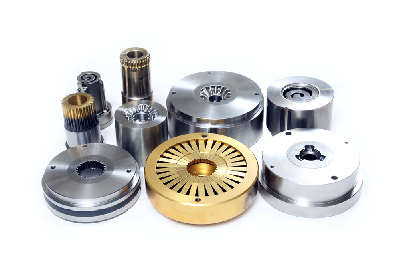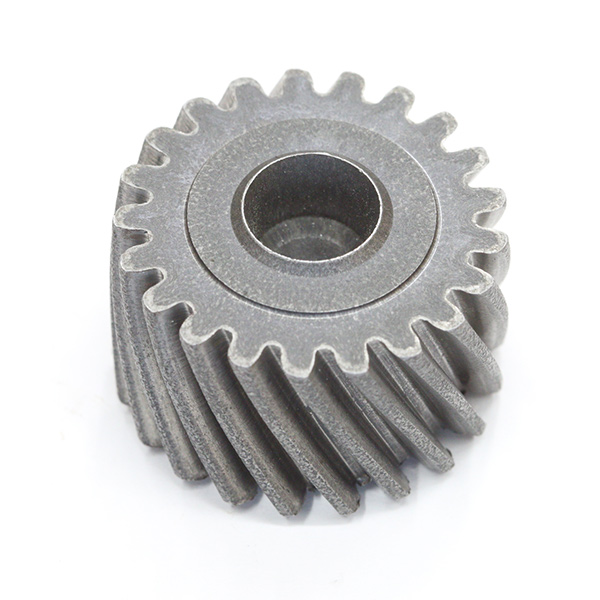- HOME
- Products and Contracted Development
- Precision Forging Dies
Precision Forging Dies
Precision Forging Dies
As a top maker of precision forging dies, NICHIDAI uses advanced technologies it has developed since its foundation to provide precision forging dies as an optimum solution to meet its customers’ requirements and applications. The company enables the conversion of parts production into net-shape manufacturing through the proposal of optimum engineering methods, including cold forging that gives it a significant edge over its competitors in the industry, warm/hot forging, as well as flow control forging and powder molding in which it is not specialized.

Die for press

Die for former
Ideal processing method “Net-Shape production”
Cold forging where forming is performed at room temperature with a high pressure causes high loads onto the die and increases the degree of difficulty in processing. However it provides high precision and strength, contributing to the reduction of resource and energy, and significantly improving productivity. As parts manufacturing will possibly be advanced, sophisticated, and diversified in future, NICHIDAI is working toward the conversion of the process of all formed products to net-shape manufacturing. ※1
※1:Forming into final geometry without cutting work
Comparison with cutting work
| Cutting work | Cold forging (Net-Shape) |
Advantages | |
|---|---|---|---|
| Productivity | △ | ◎ | Fast processing speed and high productivity |
| Stock utilization | △ | ◎ | High stock utilization |
| Product strength | △ | ◎ | Tight connection of metal fibers and work hardening improve product strength |
| Processing precision | 〇 | 〇 | Realization of Net-Shape manufacturing with high precision |
Classification by forging temperature
| Cold forging | Warm forging | Hot forging | |
|---|---|---|---|
| Characteristics | Performed at room temperature (or conditions close to room temperature) | Performed at temperatures below recrystallization temperature of the material by heating it | Performed at temperatures above recrystallization temperature of the material by heating it |
| Forging temperature ※1 | Normal temperature (Room temperature) |
600℃~850℃ | 1100~1250℃ |
| Forging load | High | Middle | Low |
| Dimensional accuracy | ◎ | 〇 | △ |
| Surface conditions | ◎ | 〇 | △ |
※1:steel
Cases for formed products
NICHIDAI’s net-shape technology contributes to the development of a wide variety of precision forgings.
Cross joint

<Forming conditions>
Material : SCr420H
Forming speed : 17~20SPM
Temperature : Room temperature
Press used : Mechanical press
<Descriptions>
- Cutting allowance reduced by enclosed forging
- Forging by bilateral hydraulic enclosing mechanism with pantograph system
Inner race

<Forming conditions>
Material : SCr420H
Forming speed : 17SPM
Temperature : Room temperature
Press used : Mechanical press
<Descriptions>
- Cutting allowance reduced by enclosed forging
- Forging by unilateral hydraulic enclosing mechanism
Hypoid pinion gear

<Forming conditions>
Material : SCr420H
Forming speed : 20mm/sec
Temperature : 800℃
Press used : Hydraulic double-acting press
<Descriptions>
- Cost reduced by forging machined parts
- Strength improved by forging the tooth-shaped portion
Bevel gear

<Forming conditions>
Material : SCM420H
Forming speed : 17~20SPM
Temperature : Room temperature
Press used : Mechanical press
<Descriptions>
- Cutting allowance reduced by enclosed forging
- Forging by unilateral hydraulic enclosing mechanism
Helical gear

<Forming conditions>
Material : SCr420H
Forming speed : 20mm/sec
Temperature : Room temperature
Press used : Hydraulic double-acting press
<Descriptions>
- Cost reduced by the use of solid-core materials
- Forming load reduced by two-stage motion
Scroll

<Forming conditions>
Material : Aluminum alloy
Forming speed : 17SPM
Temperature : 420℃
Press used : Mechanical press
<Descriptions>
- Tap height levelled by back pressure forming
- Cutting allowance reduced by back pressure mechanism

